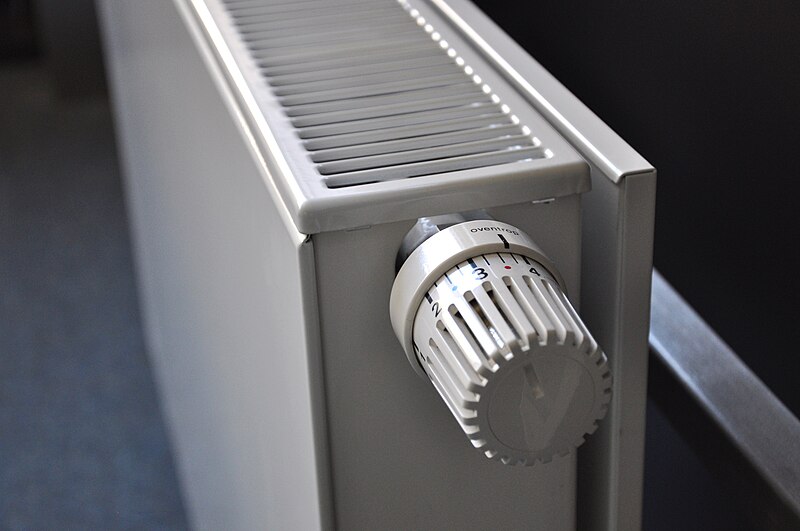Homeowners looking for efficient heating solutions often consider wall-mounted radiators, especially in houses without central heating. These radiators are a practical choice because they offer a fixed heating source that doesn’t take up floor space. Space-saving electric wall radiators can efficiently warm up a room while blending seamlessly with home decor.
Wall-mounted radiators provide consistent warmth without the need for extensive infrastructure, making them an attractive option for renovations or homes lacking central heating systems. Their sleek designs and easy installation offer a simple way to boost comfort in living spaces. Many modern electric versions even come with advanced controls, allowing users to set schedules and manage temperatures efficiently.
For those interested in both aesthetics and functionality, wall-mounted electric radiators offer a stylish yet practical solution. They can be an excellent alternative to central heating, especially when added flexibility is needed for specific rooms.
Overview of Wall-Mounted Radiators
Wall-mounted radiators are a versatile heating option, especially useful in homes without central heating systems. They come in various styles to fit different spaces and offer efficient heating methods, adapting to individual needs.
Types and Designs
Wall-mounted radiators are available in multiple designs and materials. Popular choices include panel and convector designs. Panel radiators have a flat surface and are typically made from steel or aluminum. Convector radiators have an extra layer with fins to improve heat distribution.
Materials like aluminum provide quick heating, while cast iron retains heat longer. Designs vary, with sleek modern options or traditional models. Vertical radiators save space in smaller rooms, while horizontal units fit larger spaces.
Heating Efficiency and Performance
The efficiency of wall-mounted radiators depends on their design and material. Aluminum models heat up and cool down quickly, allowing precise temperature control. They are best for small to medium spaces.
Cast iron radiators hold warmth longer, while they are slower to heat, making them suitable for sustained heating. The efficient placement of radiators is necessary for performance, often near exterior walls, and improves airflow by allowing hot air to circulate properly.
Moreover, thermostatic controls can increase efficiency by adjusting the temperature based on current needs. Environmental factors like room size and insulation also affect heating performance.
Installation and Maintenance Considerations
Installing wall-mounted radiators and maintaining them correctly are important steps in guaranteeing efficient heating in homes without central heating. This involves understanding the installation process, the care needed for maintenance, and considering the costs involved.
Installation Process
The installation of wall-mounted radiators involves several steps and precautions to guarantee they function correctly. First, selecting the right location is important. Avoid placing them near windows or doors to reduce heat loss. It’s also important to place radiators near a power outlet to avoid electrical issues and make the installation easier.
Professional installation can be beneficial for those unfamiliar with electricity or home improvement. For a DIY approach, following detailed guides can aid in properly mounting the radiator. Guarantee all safety measures are in place, such as turning off the power during installation. Depending on the complexity and the number of units being installed, it might take a few hours.
Maintenance Requirements
Maintenance of electric wall-mounted radiators is minimal but important for efficiency and longevity. Regular cleaning is necessary to prevent dust buildup, impeding heat distribution. This can be done with a soft, dry cloth to wipe down the exterior surfaces gently.
Inspect connections regularly to guarantee they remain secure. Regularly check for any signs of wear or electrical faults to maintain safety and performance. Many electric radiators also have built-in monitoring systems that alert users to issues, making maintenance more manageable. It is recommended that a professional schedule an inspection every few years to guarantee the system is operating safely and efficiently.
Cost Implications
The cost of installing and maintaining wall-mounted radiators can vary. The type and number of units needed influence initial purchase and installation costs. Professional installation might add to the total cost, but it guarantees safety and optimal performance.
Over time, wall-mounted radiators are generally cost-effective as they require minimal maintenance and are energy-efficient. Occasional professional inspections, while an additional cost, can prevent more expensive repairs or replacements in the long run. Homeowners should also consider the cost of potential energy savings compared to other heating systems, as efficient electric radiators can aid in reducing overall heating expenses.
Conclusion
Wall-mounted radiators can be a practical solution for homes without central heating. These radiators are effective in converting nearly all the electricity they consume into heat, providing instant warmth. This makes them efficient and energy-saving.
Placing radiators on exterior walls, particularly under windows, helps counteract cold drafts. This setup distributes warm air effectively throughout the room. By doing so, they address some common challenges faced in non-centralized heating systems.
In homes without central heating, choosing the right wall-mounted radiator is important. Their ability to deliver consistent warmth makes them a popular choice. Overall, they perform well as a primary heating method in such settings.

